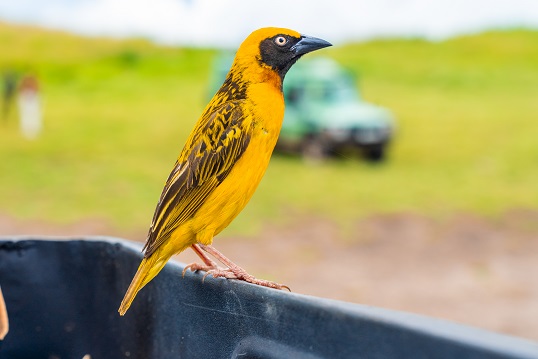Missouri is home to various bird species, each with its unique charm. Among the many avian delights the state hosts, yellow birds hold a special place. These cheerful, sunny-hued creatures not only brighten up the landscape but also play vital roles in their ecosystems. In this article, we’ll delve into the world of Missouri’s yellow birds, focusing on two prominent species: the Yellow Warbler and the American Goldfinch.
Table of Contents
ToggleWhat are Missouri Yellow Birds?
Yellow birds, as the name suggests, are birds with striking yellow plumage. In Missouri, two species stand out – the Yellow Warbler and the American Goldfinch. Let’s explore each of them in detail.
The Yellow Warbler (Setophaga petechia)
Appearance and Habitat: The Yellow Warbler is a small, vibrant bird with bright yellow feathers. They are commonly found in open woodlands, gardens, and wetlands. Their melodic songs fill the air during the breeding season.
Behavior and Diet: Yellow Warblers are insectivorous birds, feeding on various insects, spiders, and larvae. They are known for their remarkable agility in catching prey while darting among branches.
The American Goldfinch (Spinus tristis)
Physical Characteristics: The American Goldfinch, often called the “wild canary,” is a petite bird with brilliant yellow plumage. Their vibrant color is most prominent during the breeding season. In the winter, their feathers become duller.
Feeding Habits: American Goldfinches are primarily seed-eaters, favoring thistle seeds, sunflower seeds, and dandelion seeds. They are often seen perched on plants, extracting seeds with precision.
The Yellow Warbler vs. American Goldfinch
While both species share the same color palette, they have distinct differences. Yellow Warblers are more insect-oriented, whereas American Goldfinches are specialized seed-eaters. Each species also displays unique behaviors and nesting habits.
Yellow Birds in Missouri
Missouri’s diverse landscapes offer ideal habitats for these yellow birds. You can spot them in various environments, from forests and parks to your backyard. Keep your binoculars handy when exploring Missouri’s natural beauty.
The Importance of Yellow Birds
Yellow birds contribute significantly to the ecosystems they inhabit and hold cultural significance.
Ecological Significance: These birds help control insect populations, making them valuable for pest management. They also aid in pollination as they forage for nectar.
Symbolism: In various cultures, yellow symbolizes happiness, joy, and positivity. Yellow birds have been associated with these positive attributes for centuries.
Attracting Yellow Birds to Your Garden
If you want to enjoy the presence of these charming birds in your garden, there are a few steps you can take.
Bird Feeders and Plant Selection: Provide a variety of seeds and plants that attract yellow birds. Sunflowers, coneflowers, and thistles are popular choices.
Providing Water Sources: Install bird baths or small water features to offer a place for these birds to drink and bathe.
Conservation Efforts
Yellow birds, like many other bird species, face threats in the modern world. Conservation efforts are crucial to protect these beautiful creatures.
Threats to Yellow Birds: Habitat loss, pesticide use, and climate change are some of the significant challenges these birds face.
How to Help:
- Support organizations working on bird conservation.
- Create bird-friendly landscapes.
- Advocate for responsible pesticide use.
Yellow Birds and Birdwatching
For bird enthusiasts, Missouri offers excellent opportunities for birdwatching.
Tips for Birdwatchers: Use binoculars and field guides for identification. Be patient and quiet to avoid disturbing the birds.
Popular Birdwatching Spots in Missouri: Locations like Mark Twain National Forest and Squaw Creek National Wildlife Refuge are hotspots for birdwatching.
Conclusion
Missouri’s yellow birds, including the Yellow Warbler and American Goldfinch, add a touch of sunshine to the state’s natural beauty. They not only captivate with their vibrant plumage but also play crucial roles in the environment. By creating bird-friendly spaces and supporting conservation efforts, we can ensure these delightful creatures continue to thrive in Missouri’s landscapes.
FAQs After the Conclusion
- Are yellow birds common in Missouri?
Yellow birds, particularly Yellow Warblers and American Goldfinches, are relatively common in Missouri and can be found in various habitats.
- How can I attract yellow birds to my garden?
To attract yellow birds to your garden, provide bird feeders with appropriate seeds and plant bird-friendly flowers. Also, consider adding a bird bath for water.
- What is the best time to spot yellow birds in Missouri?
The best time to spot yellow birds is during their breeding season, which typically occurs in the spring and early summer.
- What are the threats to yellow bird populations in Missouri?
Yellow birds face threats like habitat loss, pesticide use, and climate change, which can affect their populations.
- Can I feed yellow birds with any seeds?
Yellow birds have specific preferences for seeds. American Goldfinches, for example, enjoy thistle seeds, while Yellow Warblers are insectivorous and may not visit seed feeders.





